The Arco lamp by Achille and Pier Giacomo Castiglioni: history of a design icon.
“We were thinking of a lamp that would cast light on the table-there were already some, but you had to go around it. For it to leave space around the table, the base had to be at least two meters away. That’s how the idea of the arch was born: we wanted it to be made with pieces already on the market, and we found that curved steel profile was just fine.”: this is how, in 1970, the great designer Achille Castiglioni (Milan, 1918 - 2002) explained the reasons that led to the birth of Arco, his lamp, designed in 1962 together with his brother Pier Giacomo Castiglioni (Milan, 1913 - 1968), and which has become part of design history.
It is a pendant lamp characterized by a simple, curved shape, inspired by that of a street lamp, with a large marble base (specifically Carrara marble), weighing 65 kilograms, that keeps it stable, and a metal arch that supports the steel shade (or the “dome,” as it is called by the Castiglioni Foundation). The base is pierced in the center to support the vertical stem on which the arch engages: the arch is made up of three sections of steel section, arranged one inside the other, which allow the lamp to be adjusted in height and tilt, so that the user can adjust the lighting to suit his or her needs. The base is large and heavy to help the lamp stay upright. The reason for choosing marble as the material to support the structure was explained by Castiglioni himself, in the interview for Ottagono magazine: “there was the problem of counterweight: we needed a heavy mass to support everything. We thought of concrete first, but then we chose marble because with the same weight it allowed us a smaller footprint and therefore in relation to a greater finish a lower cost.” The lampshade is also made of steel, and is designed to diffuse light evenly. Like the stem and arc, the shade is also adjustable, allowing the user to change the angle of the light. The Arco lamp uses a halogen bulb, providing a warm and welcoming light.
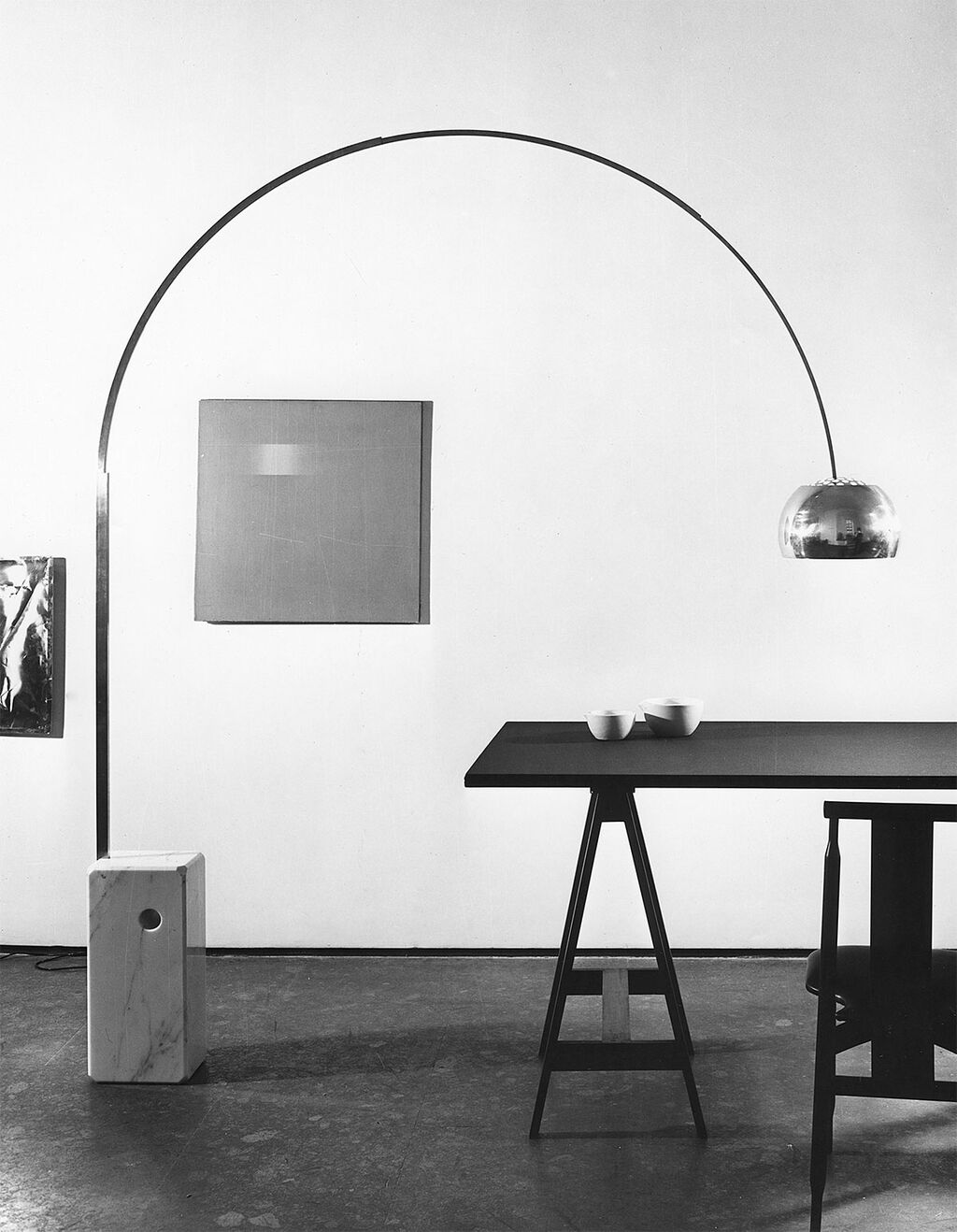
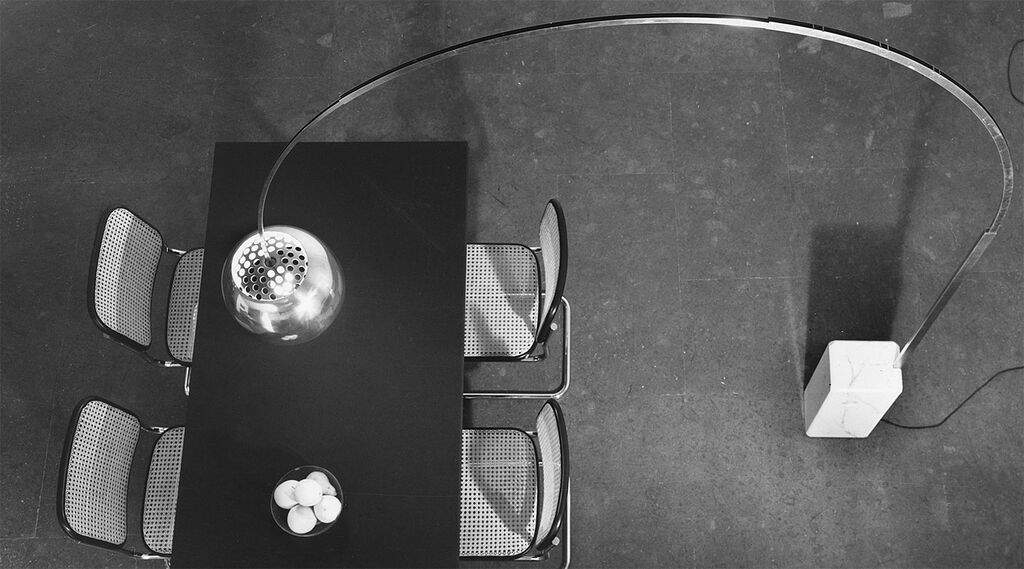
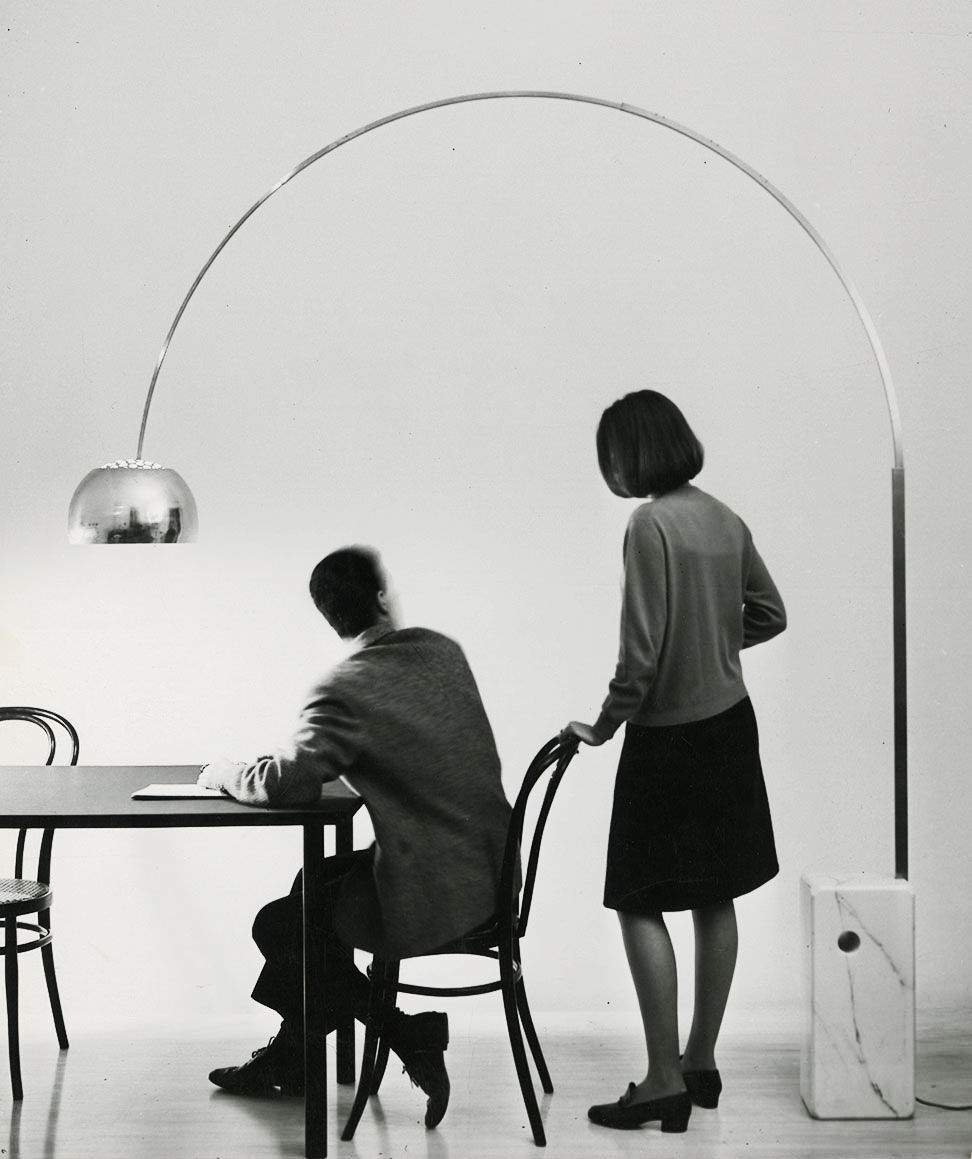
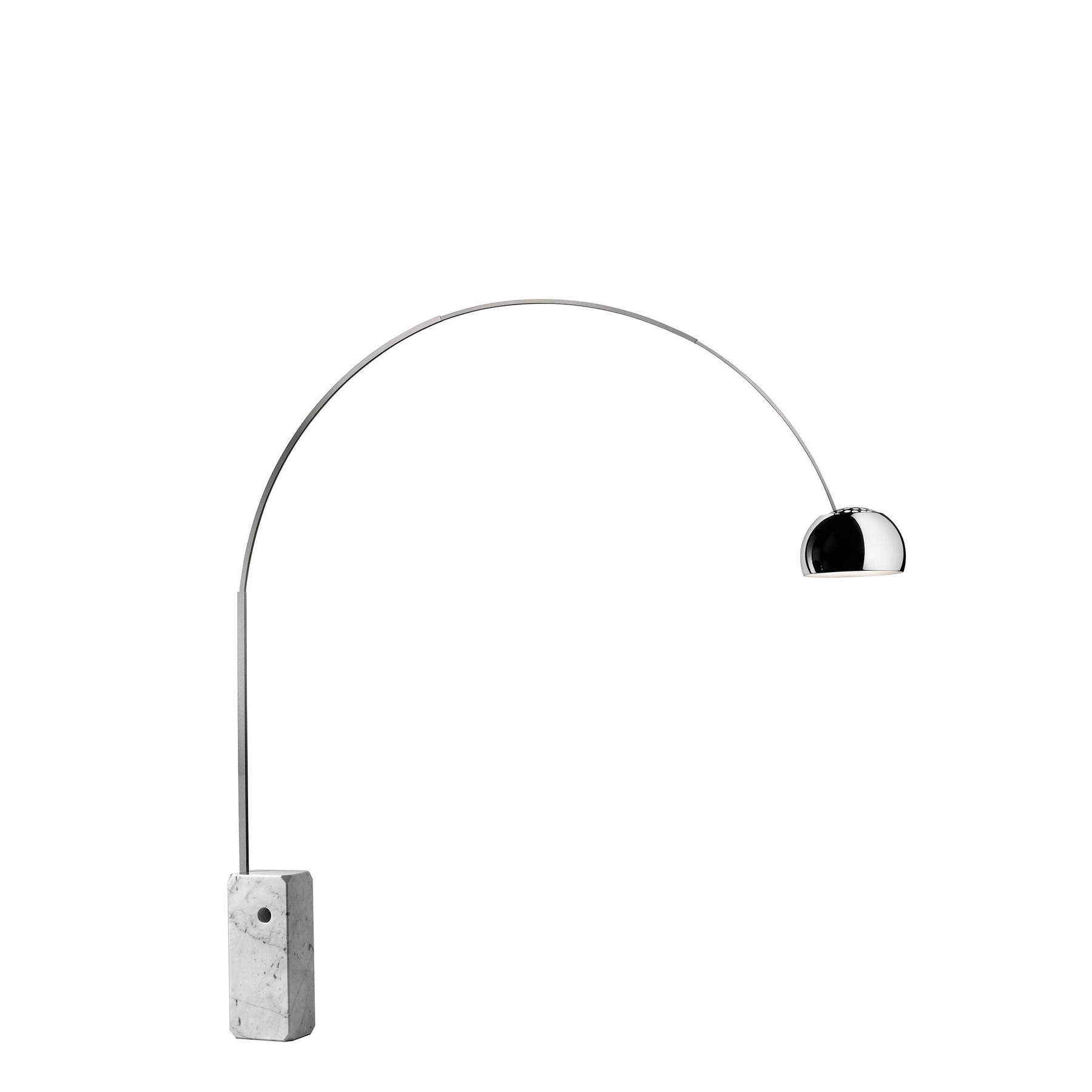
The Arco lamp was first produced by Flos, an Italian lighting company also founded in 1962, which still manufactures and markets it today. It has become an iconic piece of 20th-century Italian design, and a timeless classic, having been continuously produced for over sixty years. There are several reasons why Arco has entered the common imagination: it is, meanwhile, an example of aesthetically appealing design (despite Castiglioni having said that "in the Arco nothing is decorative: even the chamfered edges of the base have a function, namely that of not bumping into it; even the hole is not a fantasy but is there to allow the base to be lifted more easily"), characterized by quality materials and precise workmanship, which have allowed it to maintain an iconic and enduring image.
Next, the Arco lamp has always been appreciated for its functionality: it is specially designed to be adjustable in height and tilt, so that users can adjust the lighting to suit their needs, making it versatile and suitable for a wide variety of environments. Again, its longevity has contributed to the lamp’s success: its production continued for decades without ever undergoing any changes testifies in itself to its appreciation and acceptance over time. Only the electrical system has been changed for a reason of adherence to regulations that have changed over the years (the latest change in this regard, for Arco ’s 50th birthday in 2012, is the introduction of an LED version). In addition, for the 60th birthday, in 2022, a new version, Arco K, was introduced in a limited edition (only 2022 pieces were made available), with a lead-free crystal base instead of a marble one: the design curators at Flos, Fabio Calvi and Paolo Brambilla, explained that Achille and Pier Giacomo Castiglioni had chosen marble not because it was a precious material but because it was a strong and heavy material, and at the time lead-free crystal could not be used. The company therefore felt it could pay homage to the two designers without altering the soul of the project. Besides, explained architect Silvana Annicchiarico in the book 100 Objects of Italian Design, “next to the great lesson of formal stylization, the freedom of spatial articulation of the furniture constitutes the main reason for the success of this floor lamp with direct light, which frees the location of the table, dining or working, from the predetermined position of the ceiling light point.”
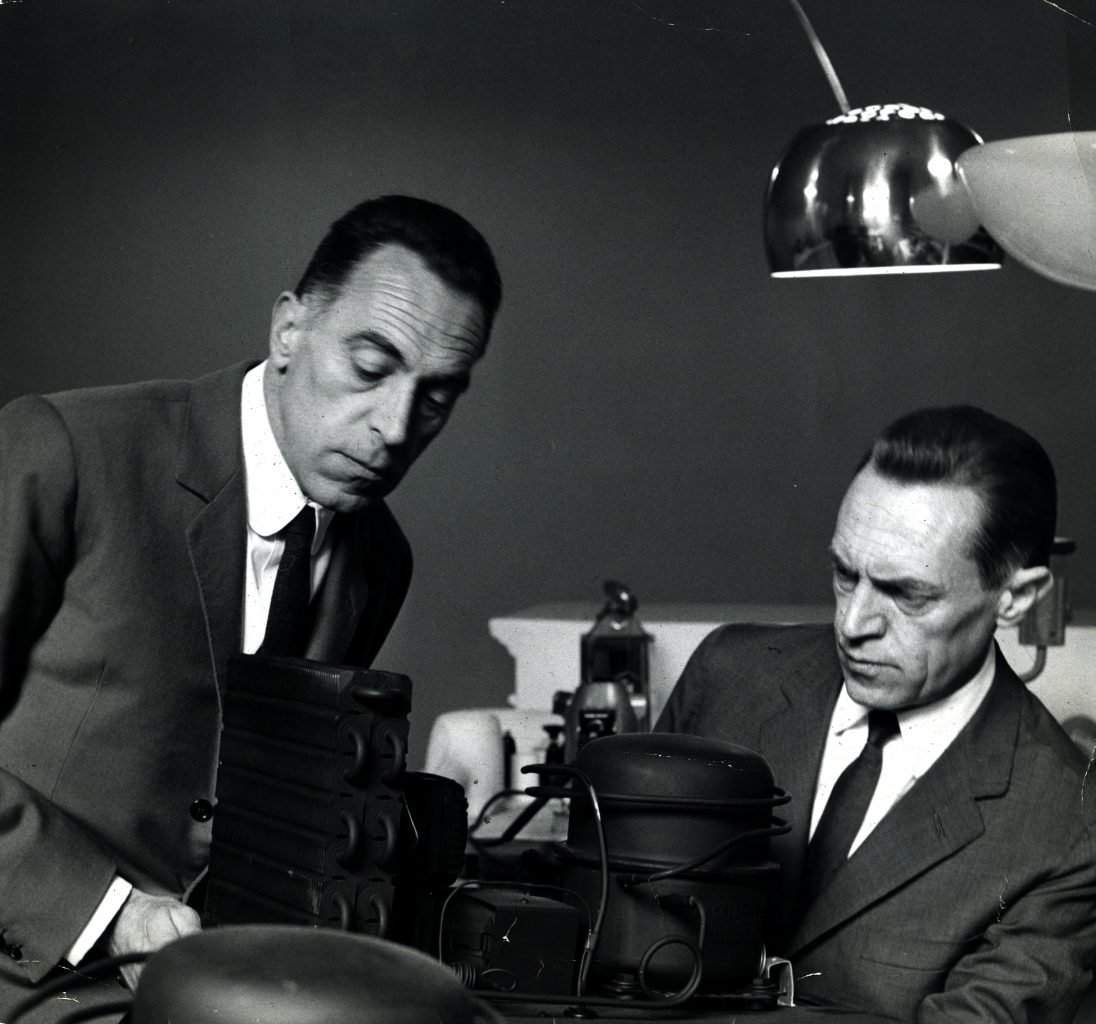
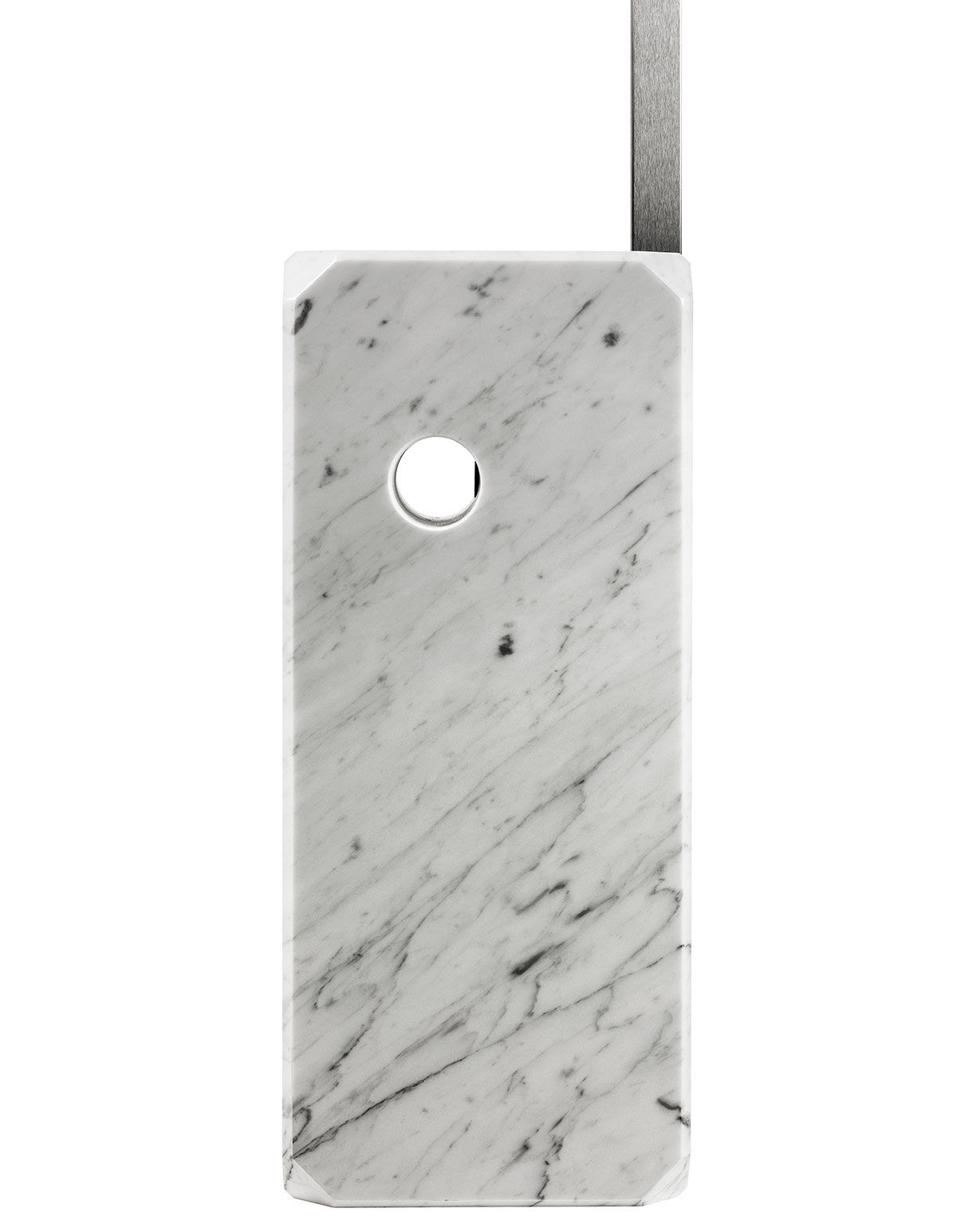

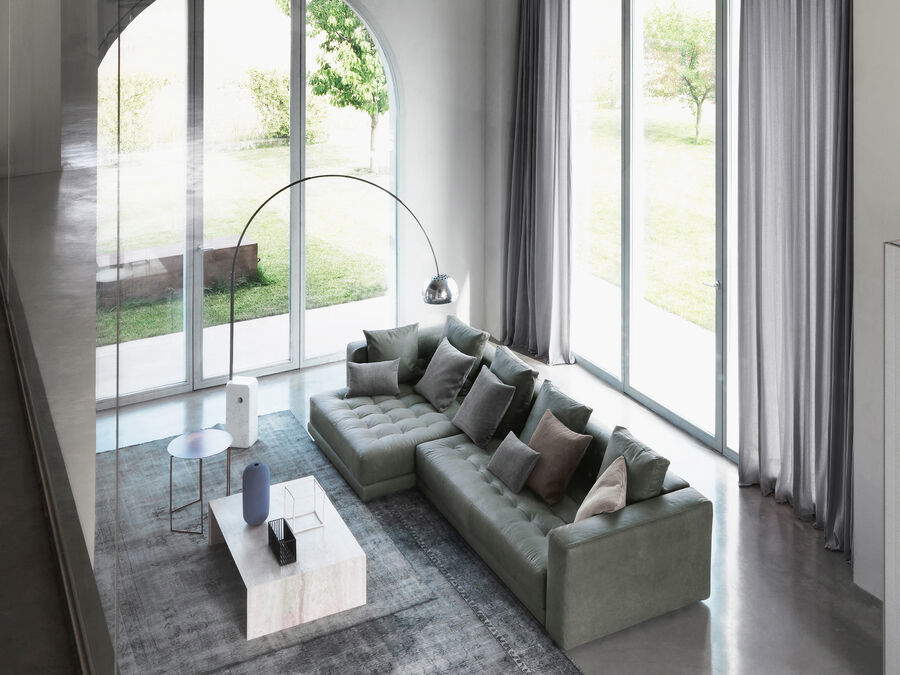
Despite the passage of time, Arco ’s popularity has not declined, demonstrating its ability to play the role of a design classic. Its success has probably also benefited from the fact that it was produced by one of the most influential Italian designers of the 20th century (Achille Castiglioni, together with his brother Pier Giacomo, created some of the most important Italian design icons in history). Finally, it is a product that has received many awards and accolades, including the Compasso d’Oro in 1979, one of the most prestigious awards in Italian design.
The Arco lamp, precisely as a result of its status as an icon of 20th-century Italian design, has often been copied or reproduced by other manufacturers. In some cases, these copies turned out to be very similar to the original, while in other cases they were products with conspicuous modifications. Plagiarism of Arco, however, has a long history, probably beginning as early as its first production started in the 1960s. In general, these reproductions do not use the same materials and production techniques used for the original version, and are not recognized as valid by the design community. Moreover, Flos, the company that produced the original lamp and continues to produce it, has taken legal action against some producers of reproductions to protect its rights. In some cases, the legal actions have been successful in getting the copies removed from the market, but there are still many copies available commercially. In general, purchasing an unauthorized reproduction is not recommended, as it is often not made with the same level of quality and attention to detail as the original version, and is therefore not a sound investment. It was during one such legal action that the artistic value of the Arco lamp was recognized: a 2006 ruling by the Court of Milan states that the work of Achille and Pier Giacomo Castiglioni is considered to be “an expression of that post-war stylistic research marked by essentiality and formal rigor,” for the “dynamism of its essential design, for the perfect harmony of the relationships of lines, forms and volumes, for the absolutely innovative conception compared to that of the classic lamp.” Reasons that led the court to hold that Arco was the “manifestation of a specific research and expressive intuition, autonomously justified with respect to practical use, capable of exerting a particular hold on the perceptual level.”
Even today, Achille Castiglioni’s Arco lamp is produced and marketed by Flos, which acquired the production rights to the original design. Flos sells the Arco lamp through authorized dealers all over the world: for those interested in purchasing an example of Arco, you can search for Flos dealers in your geographical area through the company’s website. Typically, these retailers are specialized lighting stores or design stores. In some countries there are also authorized online retailers who sell the Arco lamp. Of course, you can also find Arco on some online sales sites such as Amazon or eBay, but in this case it is important to be careful with sellers, because there may be unauthorized copies or produced by dubious sources. In general, it is always better to buy it from authorized dealers to be sure of the authenticity of the product and because you have a manufacturer’s warranty. And you will thus be able to put in your home a piece of Italian design history, also present in several museums, starting with the Milan Triennale Museum. An object that, in some ways, has been considered a product ofartistic expression. And which can therefore be compared in its own right to awork of art.
Warning: the translation into English of the original Italian article was created using automatic tools. We undertake to review all articles, but we do not guarantee the total absence of inaccuracies in the translation due to the program. You can find the original by clicking on the ITA button. If you find any mistake,please contact us.




























